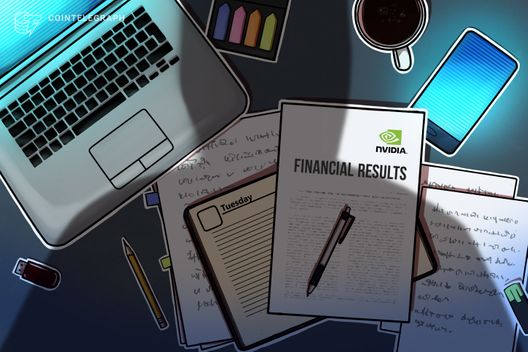Last week, Austria became the latest government to successfully trial blockchain platforms to issue government bonds. The trial follows in the footsteps of the Australian and Thai governments, both of whom developed blockchain bond issuing platforms earlier this year.
Government bonds are debt securities which represent an important way to support government spending and are widely considered to be one of the most risk-free investments available. Government bonds also make up a large proportion of the secondary market, with a total value of $22.116 trillion across the world as of September 2018. In spite of their importance, the process of issuing them is costly and can currently take up to two weeks.
The recent trials have indicated that blockchain could cut time-consuming paperwork and increase secondary market liquidity. With several governments and the World Bank revealing encouraging results, here’s how blockchain could improve the current infrastructure for government bonds:
Blockchain bonds: Bureaucracy begone
Currently, the process of issuing and contracting bonds is a lengthy ordeal for all parties involved. Each small part of the bond issuance contract must be overseen by the bank, the contractor and series of intermediaries. The whole process is gradually built up and distributed for approval at each stage. This comprehensive procedure requires significant expenditure on bureaucracy and underwriting costs, which advocates of a blockchain solution believe may no longer be necessary. James Wall, executive general manager of the Commonwealth Bank of Australia, explained to Reuters how the use of blockchain could serve to simplify the existing framework:
“You’re collapsing a traditional bond issuance from a manual bookbuild process and allocation process, an extended settlement then a registrar and a custodian, into something that could happen online instantaneously.”
As well as making all aspects of the transaction transparent, all changes would be accessible via the blockchain, saving precious time transferring the document between intermediaries. In this way, all parties would be able to inspect and monitor changes throughout the procedure without having to physically meet. Once drawn up, the data is entered as hash values on the Ethereum blockchain and is no longer possible to alter. This means that clients can rest assured their contracts will not undergo any alteration after they’ve signed on the dotted line.
The Ethereum blockchain is proving to be the favoured platform due to both its reliable track record and capacity to cope with the necessary amount of transactions. The platform’s transaction per second rate was recently upgraded to 500 per second with Zcash’s ZKSNARKs, a change overseen by Vitalik Buterin. According to Etherscan, Ethereum currently processes around 500,000 transactions a day.
Austria becomes the latest country to issue blockchain bonds
Austria’s government is the latest to issue bonds via the Ethereum public use blockchain, with 1.15 billion euros ($1.35 billion) due to be sold at auction in early October.
Oesterreichische Kontrollbank (OeKB), will operate the blockchain notarization process. With assets valued at $26 billion in 2017, OeKB is one of Austria’s largest banks. The auction, scheduled for Oct. 2, will issue Austrian Treasury (OeBFA) bonds.
The issuing of the bonds marks a first for the European nation. According to the largest regional newspaper in Austria, Kleine Zeitung, the notarization procedure has already been successfully tested and will use data from the pre-existing Austrian Direct Auction System (ADAS) as hash values on the Ethereum public blockchain.
Managing Director of the Austrian Treasury Marcus Stix said that new system has the potential to both cut costs and improve transaction security:
“This added security contributes to achieving a high level of confidence in the auction process for Austrian government bonds and strengthens Austria’s good standing in the market, which indirectly also has the capacity to contribute to favorable financing costs.”
After the successful trial, Austrian Finance Minister Hartwig Loger commented on the government’s positive reception of the results:
“Through setting up the FinTech Advisory Council at the Ministry of Finance, we are developing strategies enabling Austria to benefit optimally from these developments.”
Australia adds blockchain bonds to its growing list of technological achievements
Australia is one of the foremost countries worldwide to have made serious inroads with the implementation of blockchain in multiple sectors. In August, the Commonwealth Bank of Australia (CBA), along with the World Bank, also issued 100 million Australian dollar ($73.16 million) public bonds via blockchain. The bonds will yield a 2.251 percent turn.
The project, named the Blockchain Operated New Debt Instrument (BOND-i — a punny take on Australia’s most famous beach), aims to be the first definitive step toward bringing the creaking bond issuance practice into the 21st century. BOND-i was developed by the Blockchain Centre for Excellence, part of the CBA’s own Innovation Lab. After the development of a prototype bond in partnership with the Queensland Treasury, this venture with the World Bank could mean that the technology may soon be expanded across the sector.
This potential for this latest development has not gone unnoticed by commentators across the industry. Cointelegraph spoke to Matthew Di Ferrante, an independent developer who previously worked with the Ethereum Foundation. Di Ferrante is cautiously optimistic about the possibility of further blockchain implementation in the near future:
“I think it’s a good first example. Financial instruments like bonds are easily ported to blockchains/smart contracts, but it’s not the be-all and end-all even for mainstream financial institutions. The real usefulness will come when many different institutions and industries are all using compatible blockchains.”
The developers at the CBA, however, have already latched on to this idea. Although they are keen on emphasizing that the Ethereum protocol provides the best viable option for powering the project at this present time, they are open to the idea of using other blockchain platforms.
In spite of a promising start, Di Ferrante warned that decentralization must be more central to the bond issuing process for it to be fully viable in the future:
“It’s good to see that at least in this case, it seems that the system [the] CBA has set up will be co-managed by the World Bank, giving it some decentralization, but I’d like to see more transparent, more distributed projects, even for private blockchains.”
The results so far have also been well received by the World Bank itself. Arunma Oteh, a treasurer at the World Bank revealed how the positive results of the blockchain platform could potentially lead to wider adoption in future:
“We welcome the huge interest that this transaction has generated from various stakeholders and will continue to seek ways to leverage emerging technologies to make capital markets more secure and efficient.”
Although crypto enthusiasts might be encouraged by the apparent open-mindedness of the World Bank toward blockchain, they may be disappointed to know that its president, Jim Yong Kim, is less than keen on digital currencies, placing them in the same bracket as Ponzi schemes.
However, the blockchain bond-issuing platform is only the latest in a long line of crypto innovation in Australia. The country is looking to shift its stock exchange onto the blockchain and serious inroads are being made into reinvigorating the country’s significant agriculture and supply chain infrastructure. Nicholas Merten, a crypto commentator and founder of the DataDash YouTube channel believes that this track record of exploration and governmental openness to the technology is establishing Australia’s reputation as an industry leader:
“Australia has had an interesting approach to the subject matter. With banks being hesitant toward cryptocurrencies, and with [the] Commonwealth Bank being so eager to explore blockchain, they’ve shown an obvious sentiment toward serving as the gatekeepers of this technology in real-world applications.”
Thailand launches registrar service platform to cut red tape and boost the secondary market
Thailand has also taken the first steps toward issuing blockchain bonds. In July, the Thai Bond Market Association (TMBA) announced that it would implement a blockchain-based registrar service platform, the Bangkok Post reported.
Due to be officially introduced in late 2018, the platform also aims to do away with the time-consuming and costly bureaucracy. The eventual goal is, like in Austria and Australia, to re-energize the process of bond certificate issuance and give the liquidity of the secondary market a much needed shot in the arm.
The registrar service platform is to be built on a smart contract platform using a private blockchain. There, users will be provided with a digitized settlement database and both a system for bond subscriptions and transaction verification. In addition to this, issuers, companies and regulators will be able to access interest rates and other information relating to the bonds.
TMBA President Tada Phutthitada said that the issuance of bonds remains slow in spite of the promising growth of market liquidity. He warned that this bureaucratic bottleneck could potentially end up having a serious negative impact on the growth of corporate bonds in the secondary market. Commenting on the potential benefits of the new platform, Tada revealed the process could be cut from seven-15 days down to just three or four. Although this is nowhere near as impressive as the much-touted potential for blockchain to provide instant issuance, it is nonetheless an encouraging start for the eventual restructuring of the bond-issuing process.
The TBMA, however, does not plan to stop here. Building on the momentum started with the registrar service platform, the TBMA eventually aims to launch ‘Bond Coin’ in order to support the digitized bond system.
The transition of this procedure from dealing with the grey world of governmental bureaucracy to a modern, digitized procedure marks an exciting change for an industry that has been weighed down by its own restrictions. As more governments look to blockchain to streamline their stifling bureaucratic departments, this could well be a crucial step in bringing governance in line with an increasingly technological modern world.









